A fine late 16th-Century brass Italian astrolabe, unsigned but datable to 1590 -- 7in. (17.8cm.) diamter The limb (7.6 to 8.0mm wide) is divided into 24 hours and 360 degrees, both scales numbered with punched arabic numerals. The degree scale is marked every ten from 0-90° consecutively in four quarters. The mater has been turned from a brass disc leaving the raised limb at the edge (combined thickness 6.0mm). The mater is blank, and shows only marks due to lathe judder, filing marks, scratches and small casting fissures. The throne is small and roughly-shaped, with rotating pin and ring. Fitted into the mater are two plates, held in position by lugs: Plate A (163mm diameter; 1.1 to 1.8mm thick) is inscribed for the latitude 45° on one side; the reverse has a universal projection. Altitude lines are marked every 5° and numbered in tens. The azimuths are at 10° intervals, each numbered. Additional lines indicate the tropics, equator, planetary hours, crepuscular line (punched LINE AVRORE ); a set of dot-punched lines mark the twelve Houses of Heaven. On the reverse is the universal astrolabe projection known as the Saphea. Both latitude and longitude lines are at 5° intervals, unlabelled. On the outer edge is an unnumbered 360° scale. The hour angles (every 15°) are cut deeper, and are numbered with the hour engraved in large arabic numerals. The ecliptic line crossing the centre is divided to 5°, and at each 30° the sigil of the Zodiac is engraved. The names of 17 stars are punched ( see below ). The lug is inset and held in place by solder. This may indicate that the cumbersome process of trimming off the edge of the disc to leave a proud lug has been abandoned for adding a lug to a simply formed disc of brass. Plate B (163mm diameter; 0.8 to 1.4mm thick) is inscribed for the latitude of 44°, which number is inexpertly engraved below the centre. The altitude lines are cut every 3°, and only two of these are labelled, on the left: 6; 12. Azimuth lines are at 5° intervals, unlabelled. The tropics, equinoctial circle, crepuscular line and planetary hour lines are engraved, and are also not labelled. Indicated just with punched dots are two lines that are part of the Houses of Heaven, unlabelled, but corresponding to lines 3/9 and 5/11. Because these lines are punched, and the plate is very thin, an impression has been made that is visible on the other side. The reverse is blank, but shows a large fissure and filing marks. The lug is inset in the same way as on the accompanying plate. The shape of the rete is a simple one favoured by some Italian makers of the sixteenth century. Wide bands are provided for both the equatorial lines and the ecliptic. The equatorial is divided into single degrees, numbered in tens. The ecliptic is marked in single degrees divided in tens to thirty for each sign of the Zodiac. All numbers on these bands are punched. The name and sigil for each of the signs are engraved between guide lines. The central crossbars are counterchanged. The front of the rete shows some layout lines; the back shows only filing marks. The star pointers are formed from arcs of a circle, cut as needed, except for cavda cigni , which has a notch. There are sixteen stars, their names engraved as listed below. The outer edge of the back begins with a degree scale marked in tens 0-90° in four quarters. There follow a Zodiac scale and a concentric calendar scale, both with the names of the Signs and of the months (in Latin) engraved in capitals over guide lettering scratched in place. For obvious examples, see SAGITARIVS and DECEMBBR ; this did not, however, prevent the incorrect spelling of December. The numerals are punched. The space inside these scales has in the lower half a shadow square to 12 units at the apex, alternately shaded. Concentric with the plates are seven bands that give, first, the names of eight winds in Italian, followed by a perpetual calendar which begins with the year 1590 and ends with 1626. All
A fine late 16th-Century brass Italian astrolabe, unsigned but datable to 1590 -- 7in. (17.8cm.) diamter The limb (7.6 to 8.0mm wide) is divided into 24 hours and 360 degrees, both scales numbered with punched arabic numerals. The degree scale is marked every ten from 0-90° consecutively in four quarters. The mater has been turned from a brass disc leaving the raised limb at the edge (combined thickness 6.0mm). The mater is blank, and shows only marks due to lathe judder, filing marks, scratches and small casting fissures. The throne is small and roughly-shaped, with rotating pin and ring. Fitted into the mater are two plates, held in position by lugs: Plate A (163mm diameter; 1.1 to 1.8mm thick) is inscribed for the latitude 45° on one side; the reverse has a universal projection. Altitude lines are marked every 5° and numbered in tens. The azimuths are at 10° intervals, each numbered. Additional lines indicate the tropics, equator, planetary hours, crepuscular line (punched LINE AVRORE ); a set of dot-punched lines mark the twelve Houses of Heaven. On the reverse is the universal astrolabe projection known as the Saphea. Both latitude and longitude lines are at 5° intervals, unlabelled. On the outer edge is an unnumbered 360° scale. The hour angles (every 15°) are cut deeper, and are numbered with the hour engraved in large arabic numerals. The ecliptic line crossing the centre is divided to 5°, and at each 30° the sigil of the Zodiac is engraved. The names of 17 stars are punched ( see below ). The lug is inset and held in place by solder. This may indicate that the cumbersome process of trimming off the edge of the disc to leave a proud lug has been abandoned for adding a lug to a simply formed disc of brass. Plate B (163mm diameter; 0.8 to 1.4mm thick) is inscribed for the latitude of 44°, which number is inexpertly engraved below the centre. The altitude lines are cut every 3°, and only two of these are labelled, on the left: 6; 12. Azimuth lines are at 5° intervals, unlabelled. The tropics, equinoctial circle, crepuscular line and planetary hour lines are engraved, and are also not labelled. Indicated just with punched dots are two lines that are part of the Houses of Heaven, unlabelled, but corresponding to lines 3/9 and 5/11. Because these lines are punched, and the plate is very thin, an impression has been made that is visible on the other side. The reverse is blank, but shows a large fissure and filing marks. The lug is inset in the same way as on the accompanying plate. The shape of the rete is a simple one favoured by some Italian makers of the sixteenth century. Wide bands are provided for both the equatorial lines and the ecliptic. The equatorial is divided into single degrees, numbered in tens. The ecliptic is marked in single degrees divided in tens to thirty for each sign of the Zodiac. All numbers on these bands are punched. The name and sigil for each of the signs are engraved between guide lines. The central crossbars are counterchanged. The front of the rete shows some layout lines; the back shows only filing marks. The star pointers are formed from arcs of a circle, cut as needed, except for cavda cigni , which has a notch. There are sixteen stars, their names engraved as listed below. The outer edge of the back begins with a degree scale marked in tens 0-90° in four quarters. There follow a Zodiac scale and a concentric calendar scale, both with the names of the Signs and of the months (in Latin) engraved in capitals over guide lettering scratched in place. For obvious examples, see SAGITARIVS and DECEMBBR ; this did not, however, prevent the incorrect spelling of December. The numerals are punched. The space inside these scales has in the lower half a shadow square to 12 units at the apex, alternately shaded. Concentric with the plates are seven bands that give, first, the names of eight winds in Italian, followed by a perpetual calendar which begins with the year 1590 and ends with 1626. All





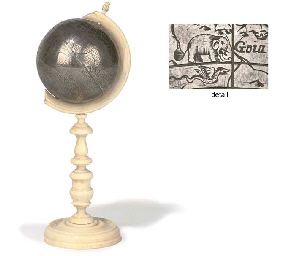

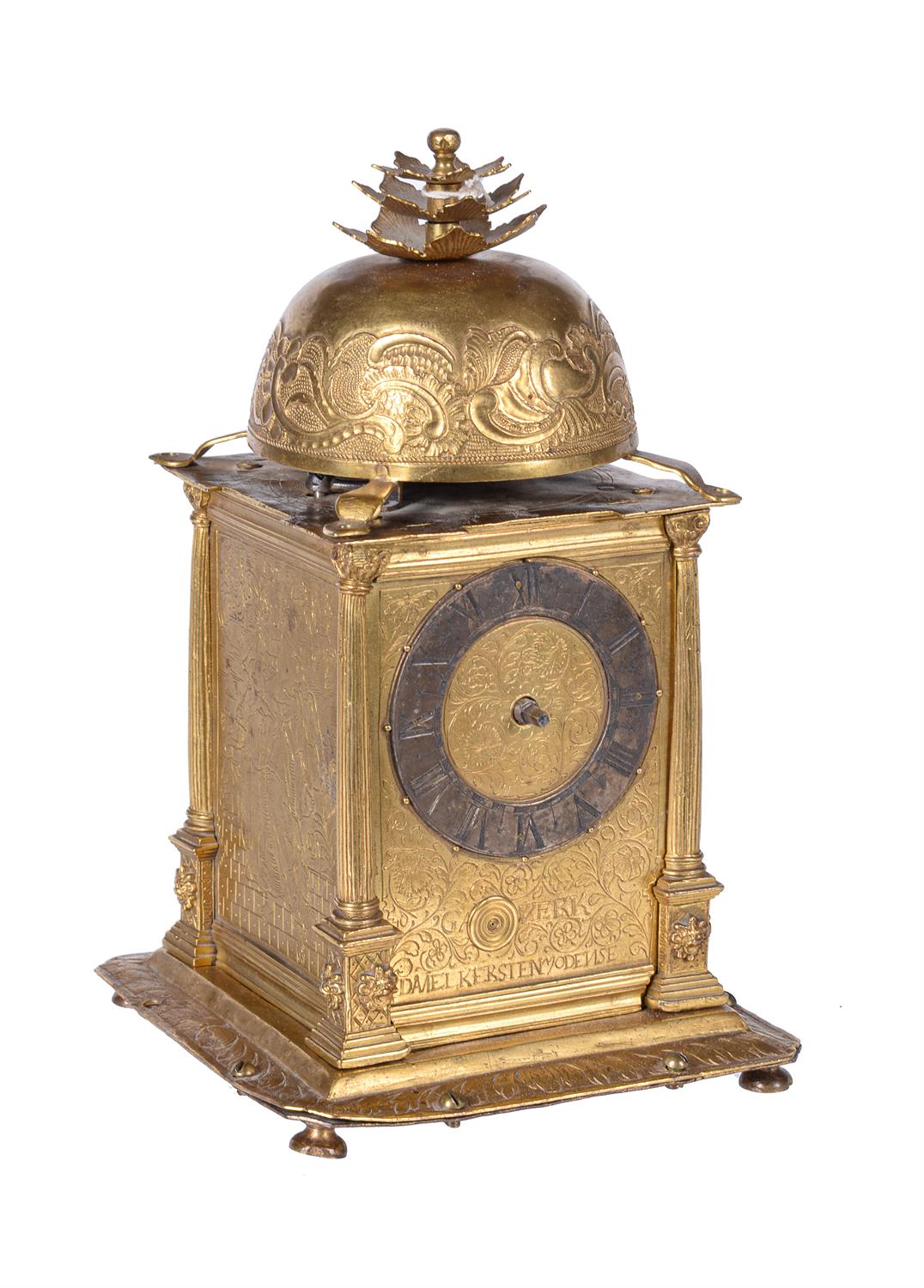

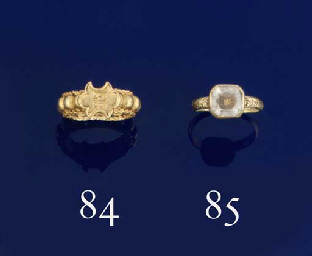
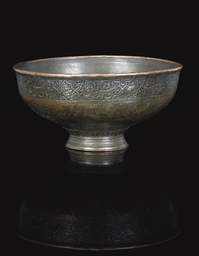

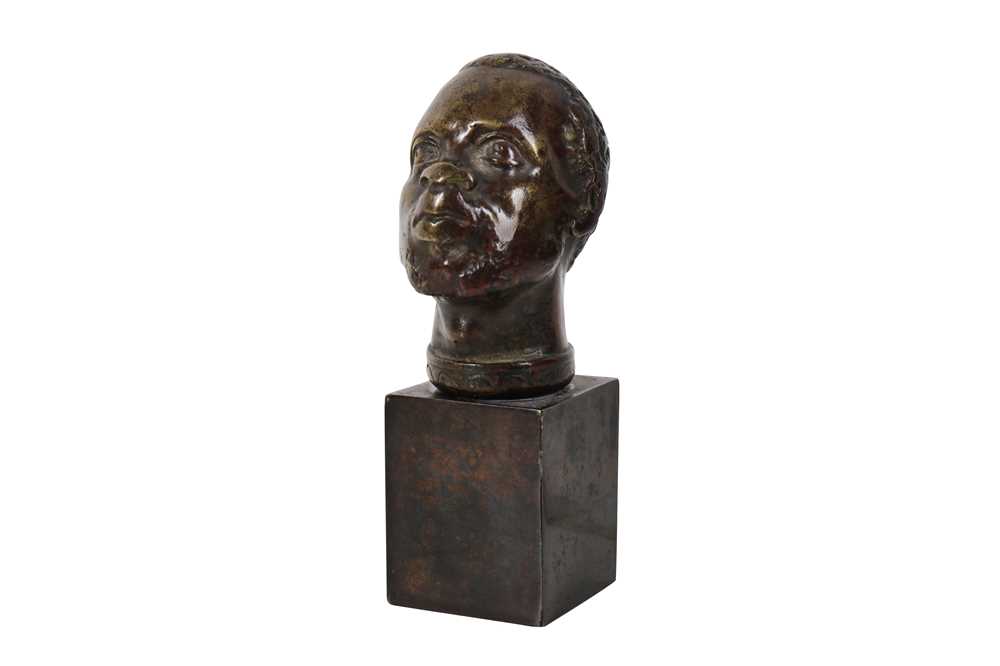

Testen Sie LotSearch und seine Premium-Features 7 Tage - ohne Kosten!
Lassen Sie sich automatisch über neue Objekte in kommenden Auktionen benachrichtigen.
Suchauftrag anlegen